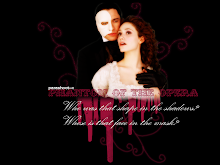http://wiki.answers.com/Q/What_is_the_themes_of_literature_%27%27_The_Phantom_of_the_Opera_by_Jeniffer_Bassett
This is the best themes of literature in 'The Phantom of the Opera'.
Appearance and Reality
The fact that The Phantom of the Opera takes place behind the scenes of the opera almost automatically draws readers' attention to the disparity between reality and appearances. Leroux gives backstage details, starting with the dancers who line up in the first chapter, gossiping, and continuing on to point out the backdrops and the business arrangements that few opera goers are allowed to see. Un-like most backstage stories, though, this novel also goes into details about the Paris opera house that few of the average workers would be aware of, such as the complicated system of tunnels underneath the building, with furnaces and prisons and hoards of rats and even a lake. Some of these details might be exaggerated from reality, but they are plausible as the reality of the novel. They clearly indicate that, as much as the sets and costumes create a false world on the stage, the opera house that visitors enter only reveals part of the story regarding what it takes to put on a grand spectacle.
The phantom himself is also used as a symbol to represent the ways that reality and appearance differ. The most obvious example of this is, of course, the mask that he wears. When he is wearing his mask, Christine can believe that he is a poor, misunderstood man who has just not been given the attention he deserves. When he represents himself to her as the Spirit of Music, she responds to his musical gift and really does see him as angelic. Once she sees Erik without his mask, however, she is so horrified that she can never think fondly of him again.
In addition to the phantom's looks, however, his whole existence is one big charade. He is greatly gifted, but his talents are in making voices seem to appear where no one is actually talking; in coming and going without being seen; in overhearing conversations that seem to be private; and in making people think that they see things that are impossible, as in when his torture chamber turns out to be a hall of illusions. He is known as a phantom for a reason: no one is ever really sure that he exists.
Innocence
The phantom's anger with the society that has rejected him is balanced in this novel with the simple innocence of the love between Christine Daaé and Raoul de Chagny. Christine's life story is surrounded by the sort of heartwarming and fantastic details that are common in fairy tales. Her father, for instance, is a kindly old soul and an incredibly talented musician. He fills her childhood with the sweet view of the world that is found in folk stories. Before he dies, he tells Christine that she will be watched over by the Spirit of Music, which at first serves to give her comfort but later, as is common with innocence carried into adulthood, causes her to fall victim to Erik, who uses his talent for ventriloquism to make her loyal to him. Mme. Valerius is another example of the innocence that surrounds Christine's life. She never questions that the younger woman is doing the right thing even when others doubt her, supplying a level of sweetness and naiveté that reflects on Christine's under-standing of the world.
The romance between Christine and Raoul is particularly untouched by the harsher elements of reality. From their first meeting as children, when Raoul puts his life at risk in service to her as he swims out into the ocean to retrieve her scarf, to their chance meeting years later at the opera house when they recognize each other, they are true to each other. A few times, Raoul questions Christine about her purity, but he always accepts her word that such questions are misguided. Readers believe so firmly in the couple's innocence that, when the narrator has bystanders remark that it is scandalous for them to go into her dressing room together and close the door, it is the bystanders who seem ignorant of the reality of true love.
Horror
This book uses several standard horror elements to make the phantom threatening and mysterious. The most obvious of these is the opera house itself, with its high, shadowy ceilings and miles of tunnels beneath. When Raoul and Christine go up to the roof, they are among the swooping gables and heavy statuary that set the ominous mood in other works, such as The Hunchback of Notre Dame. In its cellars readers are introduced to fantastic sights that are hard to believe: legions of forgotten workers who never see the light of day or swarms of rats that are at the command of the Rat Catcher.
The most distinct horror device is Erik's face. Though he is described as having a skin disease, its manifestation gives him the exact semblance of a skull, so that even as a young man he was able to travel to county fairs and bill himself as the living dead man. His eyes, too, are described as glowing in the dark, like a cat's. These details might be unlikely in the real world, but they are not at all out of place in a horror story.
Themes (The Phantom of the Opera)
5:22 AM |
Subscribe to:
Post Comments (Atom)







0 comments:
Post a Comment